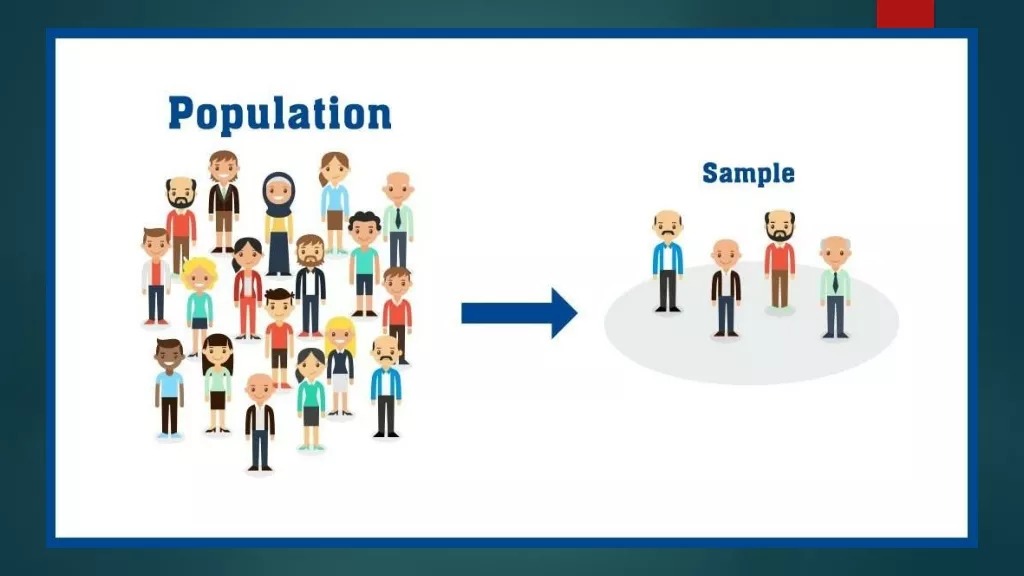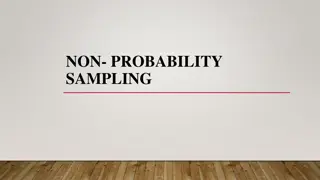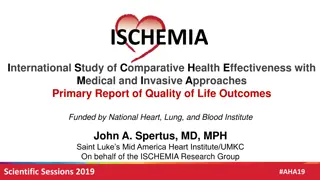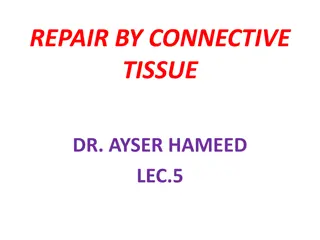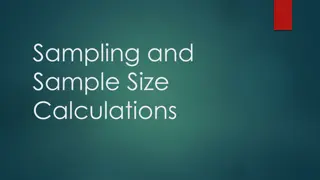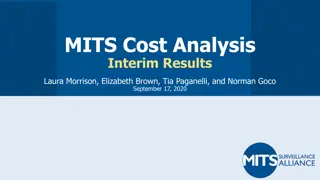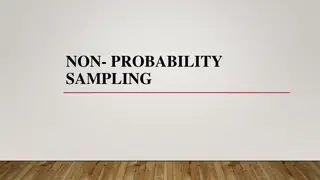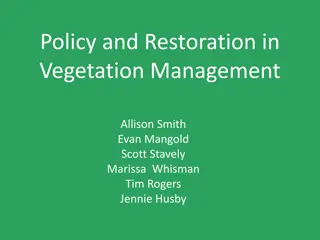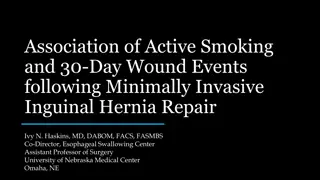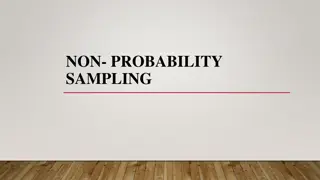Minimally Invasive Tissue Sampling in CHAMPS - Improving Child Health Data
The 2017 IANPHI Annual Meeting held in Rome, Italy showcased the role of Minimal Invasive Tissue Sampling (MITS) in utilizing data for action in Child Health and Mortality Prevention Surveillance (CHAMPS) South Africa. The meeting focused on objectives like under-5 mortality analysis, validation of MITS against autopsies, and the use of MITS data for interventions. Detailed SOPs, specimen collection kits, and the DeCoDe panel for determining causes of death were also discussed.
Uploaded on Sep 13, 2024 | 1 Views
Download Presentation

Please find below an Image/Link to download the presentation.
The content on the website is provided AS IS for your information and personal use only. It may not be sold, licensed, or shared on other websites without obtaining consent from the author.If you encounter any issues during the download, it is possible that the publisher has removed the file from their server.
You are allowed to download the files provided on this website for personal or commercial use, subject to the condition that they are used lawfully. All files are the property of their respective owners.
The content on the website is provided AS IS for your information and personal use only. It may not be sold, licensed, or shared on other websites without obtaining consent from the author.
E N D
Presentation Transcript
2017 IANPHI ANNUAL MEETING ISTITUTO SUPERIORE DI SANIT | ROME, ITALY
Child Health and Mortality Prevention Surveillance (CHAMPS) South Africa Role of Minimal Invasive Tissue Sampling in using data for action Dr Natalie Mayet on behalf of Professor Shabir Madhi & CHAMPS Team
Objectives 1. Background CHAMPS 2. Under-5 mortality and stillbirths - cause of death attribution. 3. Validation of minimal invasive tissue sampling (MITS) against complete diagnostic autopsy in stillbirths, neonates and children. 4. Using MITS data for action
CHAMPS - Minimally Invasive Tissue Sampling SOP and Specimen Collection Kits Liver Bone Marrow Brain Lung Heart Blood CSF Stool NP/OP swab Tests: Standard bacterial culture (blood, CSF, liver, stool) Multi pathogen molecular diagnostics (blood, stool CSF, lung) Histopathology (Brain, lung, liver, bone marrow) Immunohistochemistry
Determination of Cause of Death (DeCoDe) Panel Demographic DOB, DOD, Sex, Date/Time of MITS procedure, Gestational age (if applicable), Birth weight Clinical Abstraction Raw data Clinical Postmortem Diagnostic Results HIV TB Malaria Verbal Autopsy MITS Collection Data Measurements (interpretation) Photographs (interpretation) Summary of VA Raw data (answers to all of the questions) DeCoDe Panel* Pathology Results Site pathology report (standardized) CPL pathology report (with relevant photomicrographs) Whole slide images available upon request Maternal Abstraction Raw data Molecular ID Diagnostic Results TAC results with assay interpretation (supplied centrally) *Panel assigns underlying and immediate causes of death according to ICD10.
Objectives 1. CHAMPS Background 2. Under-5 mortality and stillbirths - cause of death attribution. 3. Validation of minimal invasive tissue sampling (MITS) against complete diagnostic autopsy in stillbirths, neonates and children. 4. Using MITS data for action
Trends in under-5 mortality Rates in South Africa, 2000 to 2013 Overall All Causes 1-59 months Neonates- All cause 100000 90000 80000 70000 Deaths per annum 60000 50000 40000 30000 20000 10000 0 20002001200220032004200520062007200820092010201120122013 Under-5 Childhood deaths increased from 74,753 in 2000, peaked at 89,418 in 2005 and has now declined to 47,409 in 2013.
Deaths in South African Children Under One Month of Age (2000 to 2013) Pneumonia Preterm birth Intrapartum events Sepsis/Meningitis Other Congenital abnormalities 8000 7000 6000 Deaths per annum 5000 4000 3000 2000 1000 0 2000 2001 2002 2003 2004 2005 2006 2007 2008 2009 2010 2011 2012 2013 Year Number deaths in Neonates: 18,781 in 2000 compared to 15,607 in 2013 (Birth cohort 1,168,000)
International Cause of Death Certification Immediate Cause of Death: (i.e. Direct CoD) Final event in the causal sequence that occurred closest to time of death. Nosocomial sepsis RSV pneumonia Antecedent Cause of Death. Bronchopulmonary dysplasia Underlying Cause of Death: Initiating event in the causal sequence that occurred most remote from time of death. Premature Malnutrition Contributing factors
Objectives 1. CHAMPS Background 2. Under-5 mortality and stillbirths - cause of death attribution. 3. Validation of minimal invasive tissue sampling (MITS) against complete diagnostic autopsy in stillbirths, neonates and children. 4. Using MITS data for action
Concordance of Minimal Invasive Tissue Sampling (MITS) Compared to Complete Diagnostic Autopsy (CDA) for Cause of Death (CoD) Attribution in Children (1 mnt-15 Years age) CoD identified in 100% CDA and 96% of MITS cases. Significant concordance between MITS and CDA (Kappa=0.70, 95%CI: 0.49-0.92). MITS allowed detection of specific pathogen in two-thirds (66%) of infectious CoD cases. Addition of basic clinical information (verbal autopsy or clinical record) would reduce discrepancies between MITS and CDA. Bassat Q et al., PLoSMed, 14(6): e1002317
Concordance of Minimal Invasive Tissue Sampling (MITS) Compared to Complete Diagnostic Autopsy (CDA) for Cause of Death (CoD) Attribution in Neonates (N=41). CoD identified by CDA in 100% and 85% by MITS. Moderate concordance between MITS and CDA (Kappa=0.40, 95%CI: 0.18-0.63), with agreement in 68% of cases. Higher concordance for infectious diseases (85%) and preterm complications (60%), than for congenital abnormalities (50%, 2/4). Addition of basic clinical information (verbal autopsy or clinical record) would reduce discrepancies between MITS and CDA. Menendez C et al., PLoSMed, 14(6): e1002318
Concordance of Minimal Invasive Tissue Sampling (MITS) Compared to Complete Diagnostic Autopsy (CDA) for Cause of Death (CoD) Attribution in Stillbirths (N=18). CoD identified by CDA in 89% and 83% by MITS. Substantial concordance between MITS and CDA (Kappa=0.78, 95%CI: 0.56-0.99), with agreement in 83% of cases. Maternal factors contributing to CoD attribution limited, since no placenta examination or histopathology undertaken, viz cause of fetal growth retardation not fully elucidated. Menendez C et al., PLoSMed, 14(6): e1002318
MITS Data for South Africa Site at Chris Hani Baragwanath Hospital Process of enrolment continues Preliminary data: 409 deaths : - 126 paediatric - 154 neonates - 129 stillbirths
MIA #: 0014 TEST/INFO SOURCE FINDINGS Details 2.5 mo. Female; DoBirth 2015/4/24, DoAdm 2015/7/12, DoDeath 2015/7/12 Born prematurely (34 wk GA). HIV infected. Presented with lethargy, cough, difficulty breathing, crepitations, lower chest indrawing, hepatomegaly. Weight: 1.9kg Clinical Records Discharge summary J18.0 (BPN); A09 (Diarrhoea and GE); A41/Y95 (nosocomial sepsis) FBC: WCC, Hb, PLT; Blood culture negative, LFTs: Ttl Prot, Alb, Conj Bil, ALT, ALP; U&Es: Na+ Antemortem NHLS L lung viral pneumonitis, CMV inclusion bodies, R lung infarct, interstitial pneumonitis; L+R lungs - IHC Bordetella pertussis; Brain N; Liver inadequate Histpathology Molecular tests Stool: Sapovirus (Ct: 38.2); CSF: CMV (Ct: 36.1)
International Cause of Death Certification Immediate Cause of Death: (i.e. Direct CoD) Final event in the causal sequence that occurred closest to time of death. Pertussis CMV pneumonitis Antecedent Cause of Death. HIV Underlying Cause of Death: Initiating event in the causal sequence that occurred most remote from time of death. Malnutrition Prematurity Contributing factors
Concordance Between DECoDE and Attending Physician CoD Attribution in Children 1-59 m Age. Agreement Kappa Std. Err. Z Prob>Z Immediate CoD 82.89% 0.4269 0.0614 6.96 <0.01 Underlying CoD 87.55% 0.6360 0.0591 10.77 <0.01 Underlying infectious CoD 84.20% 0.4716 0.0792 5.95 <0.01 Underlying non-infectious CoD (complete) 87.46% 0.5943 0.0679 8.76 <0.01 : Complete concordance is the agreement between the DeCoDe panel CoD and attending Physician CoD using the WHO ICD10 specific conditions (i.e. 3 character code) : Kappa score interpretation: 0.0 - .20: slight; .21 - .40: fair; .41 - .60: moderate; .61 - .90: substantial; .81 - 1: almost perfect Landis & Koch (1977)
Underlying Cause of Death Per WHO Categories in Children 1-59 Months of Age Diseases of the circulatory system; 1.6% Diseases of the genitourinary system; 1.6% Not classified elsewhere; 0.8% Diseases of blood and blood-forming organs; 1.6% Diseases of the digestive system; 0.8% Endocrine, nutritional and metabolic diseases; 2.4% Certain infectious and parasitic diseases; 29.4% Diseases of the nervous system; 3.2% Neoplasms; 7.1% Diseases of the respiratory system; 7.9% Congenital malformations; 18.3% External causes; 7.9% Conditions originating in the perinatal period; 16.7%
Preliminary findings Specific pathogens identified in select infection related deaths among South Africa children Identified Co-infections and Co-morbidities Identified multiple pathogens that contribute to mortality Determination of Antibiotic Susceptibility Profile in Neonatal Deaths Identifying underlying maternal conditions that contribute to stillbirths Understanding of social acceptability for MITS Further investigations underway with communities and traditional leaders
Objectives 1. CHAMPS Background 2. Under-5 mortality and stillbirths - cause of death attribution. 3. Validation of minimal invasive tissue sampling (MITS) against complete diagnostic autopsy in stillbirths, neonates and children. 4. Using MITS data for action
DECoDE Panel Cause of Death Category Attribution Intrapartum Antepartum infectious 21% unknown 13% unknown 27% infectious 46% non_infectious 52% non_infectious 41%
All Stillbirths Cause of Death Categories Disorders related to fetal growth 1% Other 1% Unspecified 21% antepartum/intrapartum hypoxia/event 36% Congenital malformation 4% Infection, 37%
Objectives 1. CHAMPS Background 2. Under-5 mortality and stillbirths - cause of death attribution. 3. Validation of minimal invasive tissue sampling (MITS) against complete diagnostic autopsy in stillbirths, neonates and children. 4. Using MITS data for action
Using CHAMPS Data: Examples of Data to Action Reporting pertinent results to families Family HIV testing and referral to care Reporting aggregate findings to communities Investigating possible outbreaks Presenting findings during hospital mortality reviews, Ministerial committee on child morbidity and mortality Implementing strategies to reduce nosocomial infections Training on death certificate completion Local National Incorporating CHAMPS surveillance findings in national child mortality reviews Including pediatric deaths in epidemiologic surveillance bulletins Analyzing CHAMPS data to inform national vaccination policies Incorporating CHAMPS surveillance findings in international child mortality analyses Setting international priorities for achieving U5M targets Planning efforts for vaccine development International



